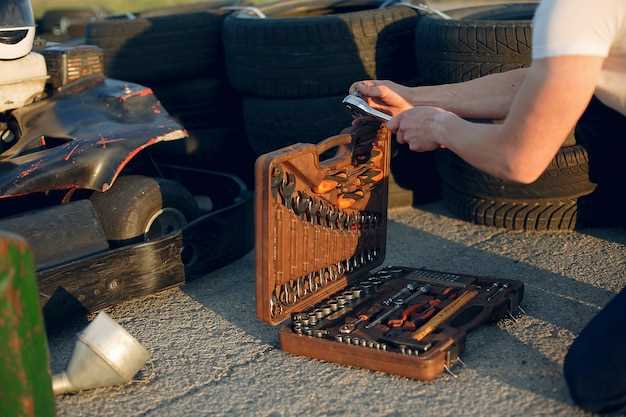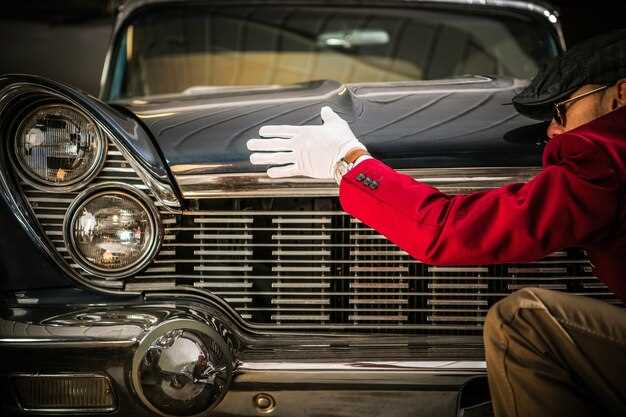
Restoring a vintage car is a rewarding journey that combines your passion for automotive history with the excitement of hands-on repair work. This guide is designed for beginners who are eager to learn the intricacies of restoration and breathe new life into classic vehicles. Each step you take not only enhances your technical skills but also deepens your appreciation for the craftsmanship of yesteryears.
The process of repair and restoration involves understanding the unique qualities of vintage cars, from their original designs to the materials used in their construction. It is essential to approach each project with patience and a willingness to learn. Whether you aim to create a showroom-ready vehicle or a reliable daily driver, grasping the fundamentals will set you on the path to success.
This guide will walk you through each phase of the restoration process, offering valuable tips and insights. You’ll explore topics such as assessing the condition of your vintage car, sourcing the right parts, and mastering the necessary repair techniques. By the end of this journey, you’ll not only have a stunning restored vehicle but also gained a wealth of knowledge about the art of vintage car restoration.
Choosing the Right Vintage Car for Restoration Projects
When embarking on a vintage car restoration project, the first crucial step is selecting the right vehicle. Not all vintage cars are equally suited for restoration; some are more desirable, easier to find parts for, and offer better potential for repair.
Assess Your Skills and Resources
Before diving into the selection, consider your own skills and the resources available to you. Some vintage models are simpler to work on and require less technical expertise, while others may involve complicated systems and needs. Determine whether you are comfortable with engine work, body repairs, or electrical systems, and choose a car that aligns with your abilities.
Research Popular Models
Certain vintage cars are iconic and generally have a larger following among enthusiasts. Classics from brands like Ford, Chevrolet, and Volkswagen often have abundant aftermarket parts available, making restoration more manageable. Investigating which models have a strong community can provide valuable resources and support during your project.
Evaluate the Condition
Condition is critical when selecting a vintage car for restoration. Look for a vehicle with minimal rust and damage to its frame and body, as extensive repairs can escalate costs and complexity. Ensure that there are enough original parts or reliable replacements available, as this will significantly impact the restoration process.
Consider Budget and Investment Potential
Establish a budget that accounts for not only the purchase price but also the costs of parts, tools, and professional assistance, if needed. Some vintage cars offer better investment potential than others; evaluating market trends and the car’s desirability can inform your choice. A well-chosen project can appreciate significantly over time.
Personal Preference
Ultimately, your personal connection to the car plays a major role in your selection. Whether it’s the model you admired in your youth or a lesser-known gem, choosing a vintage car that resonates with you will enhance the restoration experience. Passion for a specific make or model will keep you motivated through the challenges of repair.
In summary, selecting the right vintage car for your restoration project involves a careful assessment of your skills, the vehicle’s condition, budgetary constraints, potential investment returns, and personal preference. By addressing these factors thoughtfully, you can set the stage for a rewarding and successful restoration journey.
Essential Tools and Materials for Vintage Car Repair

When embarking on the journey of vintage car restoration, having the right tools and materials is crucial. A well-stocked garage can make the difference between a smooth project and a frustrating experience. Below, you’ll find a list of essential items that every aspiring restorer should consider.
First and foremost, a basic set of hand tools is vital. This includes wrenches, screwdrivers, pliers, and sockets. These tools will allow you to disassemble components, tighten bolts, and make necessary adjustments. Investing in high-quality tools will ensure durability and reliability during your restoration process.
A comprehensive toolkit should also include specialty tools specific to vintage vehicles. These might consist of timing lights, compression testers, and feeler gauges. Such instruments help assess engine performance and facilitate precise adjustments, making them indispensable for any car enthusiast.
In addition to hand tools, power tools will greatly expedite the restoration process. Electric drills, angle grinders, and impact wrenches can save significant time and effort, particularly when working on rust removal or body modifications. A good-quality welder is also essential for repairing or replacing rusted sections of the chassis.
Safety equipment cannot be overlooked. Protective eyewear, gloves, and a respirator mask are necessary to keep you safe from dust, debris, and harmful substances during the restoration. Make sure to wear appropriate clothing and follow safety protocols to minimize risks.
When it comes to materials, rust treatment products, paint, and body fillers are crucial for restoring the car’s appearance and integrity. A reliable rust converter will stop corrosion in its tracks, while high-quality automotive paint ensures that your vintage car looks as good as it did when it first rolled off the assembly line. Body fillers will help achieve a smooth surface on repaired areas.
Lastly, don’t forget about essential fluids and lubricants. Oil, coolant, brake fluid, and transmission fluid are vital for the proper functioning of your restored vehicle. Ensure that all systems are refreshed with the appropriate fluids to guarantee reliable performance once your project is complete.
Equipped with the right tools and materials, you will be well on your way to successfully restoring your vintage car. Each project presents unique challenges, but having these essentials will prepare you to tackle any task with confidence.
Step-by-Step Process for Restoring Classic Car Components

Restoring vintage car components requires careful planning and execution. Start by assessing the condition of each component, identifying which parts need repair or replacement. Document any issues thoroughly to guide your restoration process.
Next, gather the necessary tools and materials. Essential tools include wrenches, screwdrivers, pliers, and cutting tools. Depending on the component, you may need specific supplies such as paints, rust inhibitors, and replacement parts. Always choose high-quality materials for a lasting result.
Begin with disassembly. Carefully remove the component, labeling each part to ensure proper reassembly. Take pictures during this process to serve as a visual reference later on. Store all bolts and screws in labeled containers to prevent loss.
Once disassembled, conduct a thorough cleaning. Use solvents to remove grease and dirt, and sandpaper to eliminate rust. For severely damaged parts, consider media blasting for a more comprehensive clean. Ensure the component is dry before proceeding to the next step.
Repair any damage found during cleaning. Use welding for metal components, epoxy for plastic, or filler for minor imperfections. Ensure repairs are structurally sound and let them cure according to manufacturer recommendations.
After repairs, it’s time to refinish. Apply primer followed by the appropriate paint for vintage cars. Consider using a clear coat to protect the finish. Allow each layer to dry completely before applying the next to achieve a smooth, professional look.
Finally, reassemble the component. Refer to your earlier notes and photos to ensure everything is put back correctly. Test the component to ensure it functions as intended before reinstalling it in the vintage car.
By following these steps, you can restore classic car components effectively, preserving their heritage while ensuring they perform well on the road.
